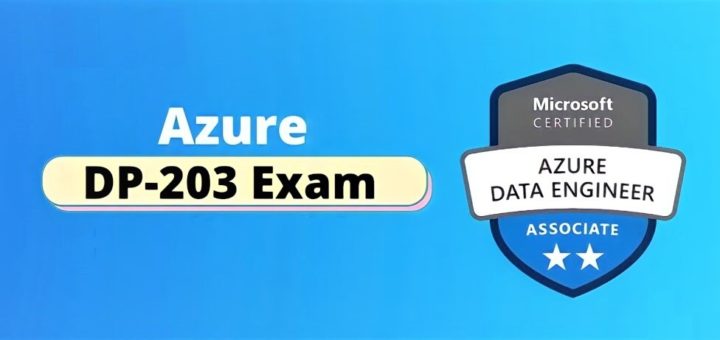Question #31
You need to develop a mobile app for employees to scan and store their expenses while travelling.
Which type of computer vision should you use?
- A. semantic segmentation
- B. image classification
- C. object detection
- D. optical character recognition (OCR)
Correct Answer: D
Azure’s Computer Vision API includes Optical Character Recognition (OCR) capabilities that extract printed or handwritten text from images. You can extract text from images, such as photos of license plates or containers with serial numbers, as well as from documents – invoices, bills, financial reports, articles, and more.
Reference:
https://docs.microsoft.com/en-us/azure/cognitive-services/computer-vision/concept-recognizing-text
Question #32
DRAG DROP –
Match the facial recognition tasks to the appropriate questions.
To answer, drag the appropriate task from the column on the left to its question on the right. Each task may be used once, more than once, or not at all.
NOTE: Each correct selection is worth one point.
Select and Place:
Correct Answer:
Box 1: verification –
Face verification: Check the likelihood that two faces belong to the same person and receive a confidence score.
Box 2: similarity –
Box 3: Grouping –
Box 4: identification –
Face detection: Detect one or more human faces along with attributes such as: age, emotion, pose, smile, and facial hair, including 27 landmarks for each face in the image.
Reference:
https://azure.microsoft.com/en-us/services/cognitive-services/face/#features
Question #33
DRAG DROP –
Match the types of computer vision to the appropriate scenarios.
To answer, drag the appropriate workload type from the column on the left to its scenario on the right. Each workload type may be used once, more than once, or not at all.
NOTE: Each correct selection is worth one point.
Select and Place:
Correct Answer:
Box 1: Facial recognition –
Face detection that perceives faces and attributes in an image; person identification that matches an individual in your private repository of up to 1 million people; perceived emotion recognition that detects a range of facial expressions like happiness, contempt, neutrality, and fear; and recognition and grouping of similar faces in images.
Box 2: OCR –
Box 3: Objection detection –
Object detection is similar to tagging, but the API returns the bounding box coordinates (in pixels) for each object found. For example, if an image contains a dog, cat and person, the Detect operation will list those objects together with their coordinates in the image. You can use this functionality to process the relationships between the objects in an image. It also lets you determine whether there are multiple instances of the same tag in an image.
The Detect API applies tags based on the objects or living things identified in the image. There is currently no formal relationship between the tagging taxonomy and the object detection taxonomy. At a conceptual level, the Detect API only finds objects and living things, while the Tag API can also include contextual terms like “indoor”, which can’t be localized with bounding boxes.
Reference:
https://azure.microsoft.com/en-us/services/cognitive-services/face/ https://docs.microsoft.com/en-us/azure/cognitive-services/computer-vision/concept-object-detection
Question #34
You need to determine the location of cars in an image so that you can estimate the distance between the cars.
Which type of computer vision should you use?
- A. optical character recognition (OCR)
- B. object detection
- C. image classification
- D. face detection
Correct Answer: B
Object detection is similar to tagging, but the API returns the bounding box coordinates (in pixels) for each object found. For example, if an image contains a dog, cat and person, the Detect operation will list those objects together with their coordinates in the image. You can use this functionality to process the relationships between the objects in an image. It also lets you determine whether there are multiple instances of the same tag in an image.
The Detect API applies tags based on the objects or living things identified in the image. There is currently no formal relationship between the tagging taxonomy and the object detection taxonomy. At a conceptual level, the Detect API only finds objects and living things, while the Tag API can also include contextual terms like “indoor”, which can’t be localized with bounding boxes.
Reference:
https://docs.microsoft.com/en-us/azure/cognitive-services/computer-vision/concept-object-detection
Question #35
HOTSPOT –
To complete the sentence, select the appropriate option in the answer area.
Hot Area:
Correct Answer:
Azure Custom Vision is a cognitive service that lets you build, deploy, and improve your own image classifiers. An image classifier is an AI service that applies labels (which represent classes) to images, according to their visual characteristics. Unlike the Computer Vision service, Custom Vision allows you to specify the labels to apply.
Note: The Custom Vision service uses a machine-learning algorithm to apply labels to images. You, the developer, must submit groups of images that feature and lack the characteristics in question. You label the images yourself at the time of submission. Then the algorithm trains to this data and calculates its own accuracy by testing itself on those same images. Once the algorithm is trained, you can test, retrain, and eventually use it to classify new images according to the needs of your app. You can also export the model itself for offline use.
Incorrect Answers:
Computer Vision:
Azure’s Computer Vision service provides developers with access to advanced algorithms that process images and return information based on the visual features you’re interested in. For example, Computer Vision can determine whether an image contains adult content, find specific brands or objects, or find human faces.
Reference:
https://docs.microsoft.com/en-us/azure/cognitive-services/custom-vision-service/home










good